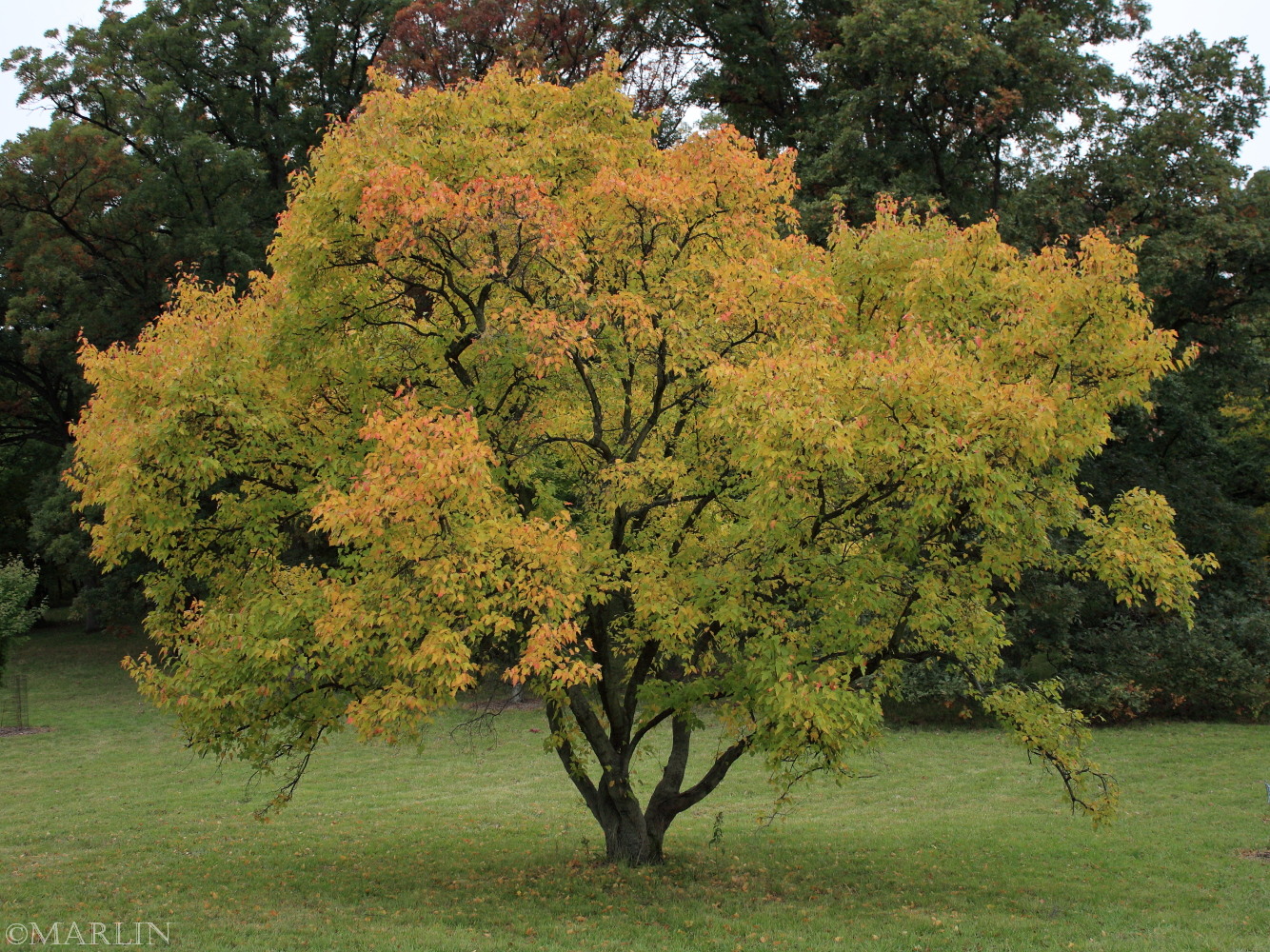Durand Dwarf Amur Maple – Acer ginnala
Amur maple is an excellent, low-growing tree for small yards and other small-scale landscapes. It can be grown as a multi-stemmed clump or can be trained into a small tree with a single trunk up to four to six feet tall. The tree grows about 20 to 30 feet tall and has an upright, rounded, finely branched growth habit which creates dense shade under the crown. Due to excessive branchiness, some pruning is required early in the life of the tree to create dominant major branches. Amur maple can grow rapidly when it is young if it receives water and fertilizer, but it is well suited for planting close to power lines since it slows down and remains small at maturity.
The main ornamental value of Amur Maple is the brilliant red fall foliage color and fruit which sports bright pink wings. It is a durable tree, tolerating poor soil, but will grow less vigorously in the southern end of its range. It will leaf scorch in dry summers in full sun but is very drought-tolerant and will not die-back. It is most drought-tolerant in partial shade. The plant is sometimes used in hedges or screens, and can be used for planting along streets beneath power lines. It makes a nice specimen or patio tree.
Amur maple is usually pest-free. Aphids can infest maples, and may be numerous at times. High populations can cause leaf drop. Another sign of heavy aphid infestation is honey dew on lower leaves and objects beneath the tree. Aphids are controlled by spraying or they may be left alone. If not sprayed, predatory insects will bring the aphid population under control. Scales are an occasional problem on maples. Perhaps the most common is cottony maple scale. The insect forms a cottony mass on the lower sides of branches. Scales are usually controlled with horticultural oil sprays applied in spring before growth begins. Scales may also be controlled with spray to kill the crawlers [2].
References
1. Durand Dwarf Amur Maple, Morton Arboretum acc. 478-66*1, photo Bruce Marlin
2. Edward F. Gilman and Dennis G. Watson, USDA Forest Service Fact Sheet ST-14 “Acer ginnala”
Family Aceraceae – Maples
The Maples are some of our most familiar and beloved trees. Most are native to the far east: China, Japan, Korea, Manchuria. Maples produce a distinctive winged fruit called a samara, also commonly known as helicopters or whirlybirds. Tree Encyclopedia | Tree Index | Maple Index

